Behind the Design: AI-Themed Laptop Skins
Our graphic designer Jen recently collaborated with Elspeth Maxwell of Dog and Fox to create MacBook Air laptop skins and wallpapers for use in the project about young people’s responses to Generative AI.
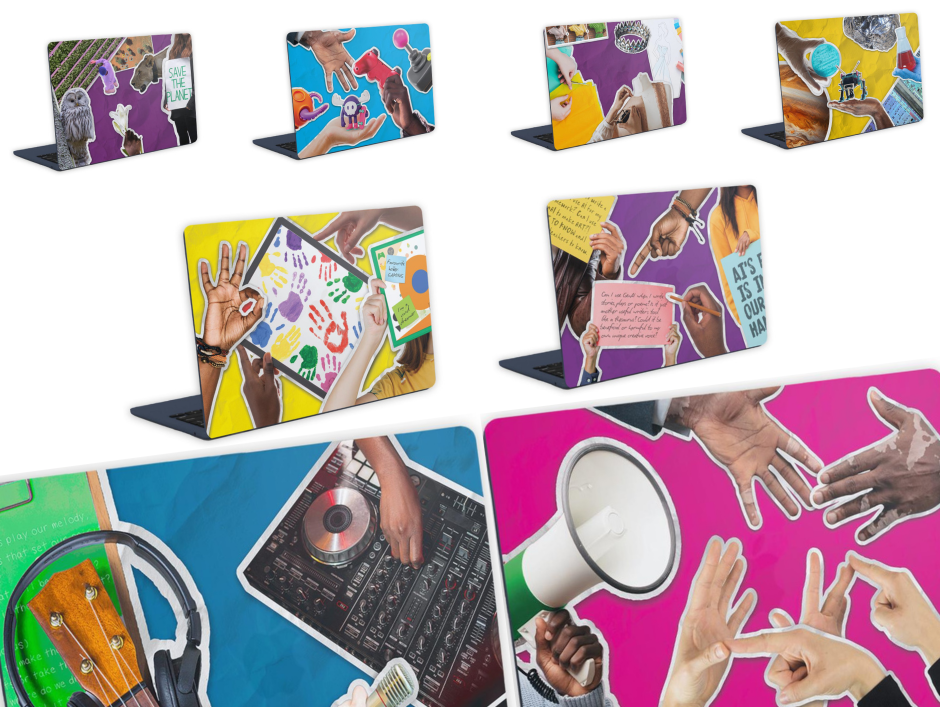
We’re working with the University of Edinburgh and the University of East Anglia to research young people’s attitudes and opinions on Generative AI as part of this BRAID-funded project. We want to find out how pupils feel about Generative AI, what they understand about it, and what they think are examples of responsible applications of the technology.
As part of this research, we designed a series of laptop skins and wallpapers that illustrate the potential of Generative AI in educational settings. Elspeth carefully crafted the original BRAID branding to give a positive, fresh feeling that emphasises collaboration with young people and evoking ‘activism’ through signs of handwritten questions and opinions. The iconography and imagery used were linked to young people and education, with bright colours that evoke a classroom setting.
Together, we’ve created 8 skins that reference different areas where Generative AI is likely to make an impact.
Check out the designs below, and you can download the full set of wallpapers to use on your own computer.
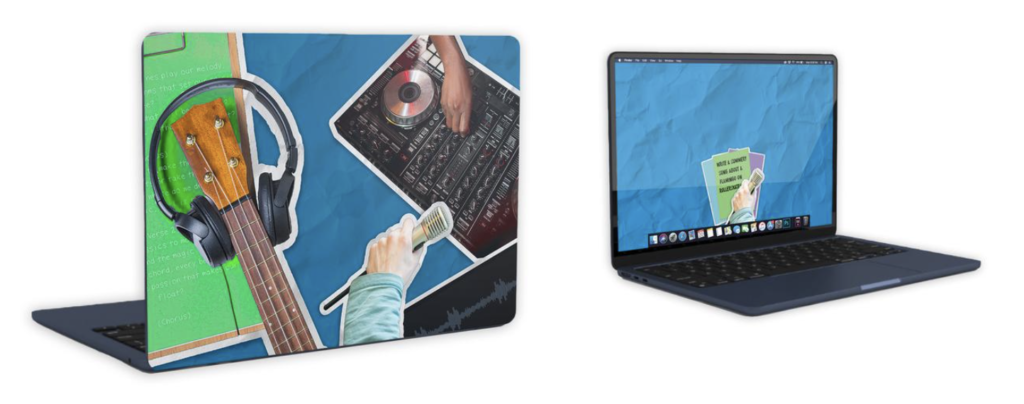
Music and Composition
Technology has shaped the way music is made, from traditional hand-made instruments to electronically produced synths and everything in between. Where is AI’s place in making music?
This imagery shows the music production across different genres by humans with a subtle link to AI through a notepad containing an AI generated song, and a soundwave interface from a popular music generation website.
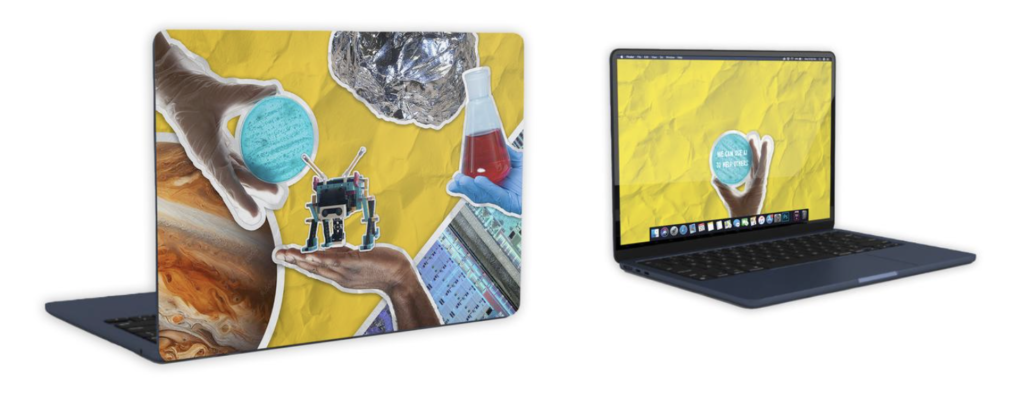
Science and Technology
A link to generative AI is seen through a generated circuit board and a lump of silicon. (Silicon chips play a crucial role in enabling the growth of AI. Specialised AI chips, based on silicon technology, are designed to handle the complex computational tasks required for AI algorithms). Other imagery chosen including scientists wearing PPE were selected to reflect the work involved in the industry. Finally, the vastness of the industry is reflected through the inclusion of images of a tiny robot and Jupiter.
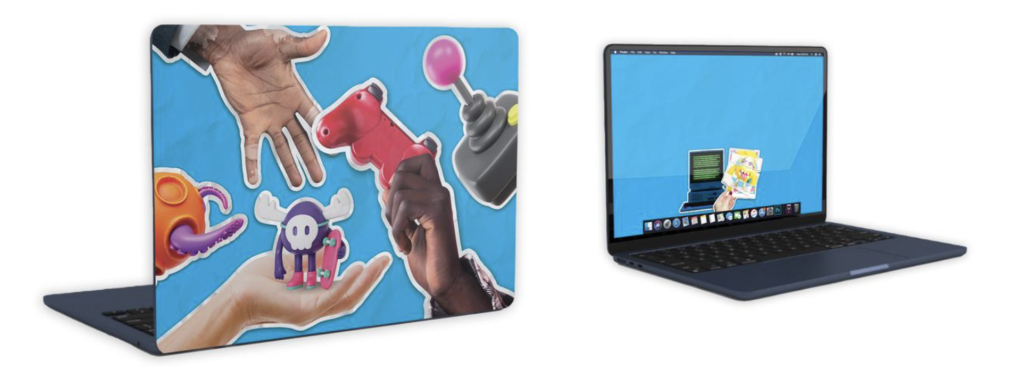
Gaming
Technology has influenced how people create and play games from its beginning. Is AI any different, and if so, in what ways? How is it being used currently?

Creative Writing
Is GenAI just another useful writer’s tool like a thesaurus? Could it be beneficial, or even harmful to a person’s unique creative voice?
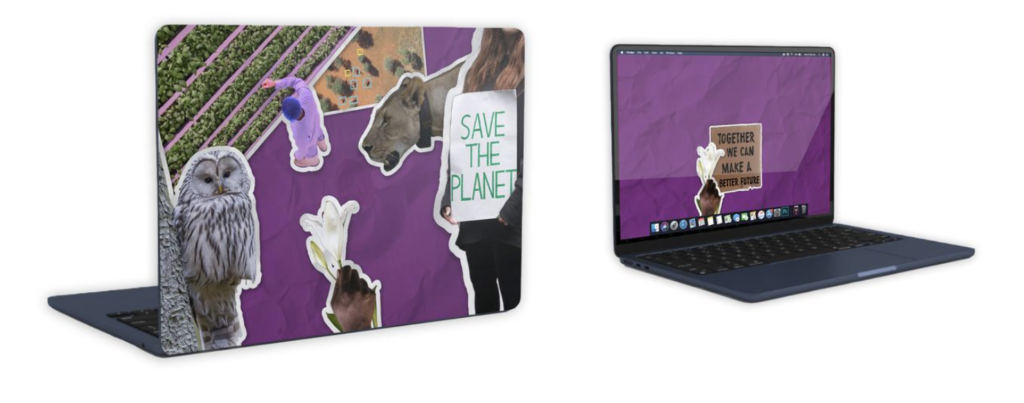
Natural Environment
From nature conservation to collecting environmental data and monitoring wildlife, could AI be used as a tool for a better future?
AI can be used in aid of nature conservation and collecting environmental data through monitoring wildlife. Visual examples of this include vertical farming, wildlife drone imagery and a lion wearing a tracking collar. A young person holding a protest sign was chosen to link to the overarching theme of the project’s aims to empower young people and give them a voice. The images frame a hand holding a hand holding a white lily, symbolic of new beginnings, change and peace.
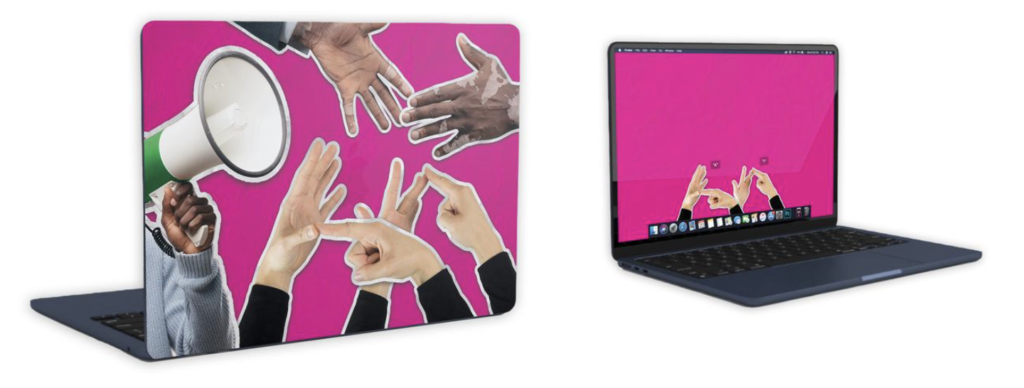
Communication
This concept is intended to provoke consideration of how AI could be used to enhance communication and language learning and translation. It features the British Sign Language finger spellings of “AI”. , This is partly inspired by a group of young people who created a two-way AI-enabled sign language translator and won a £20,000 technology prize.
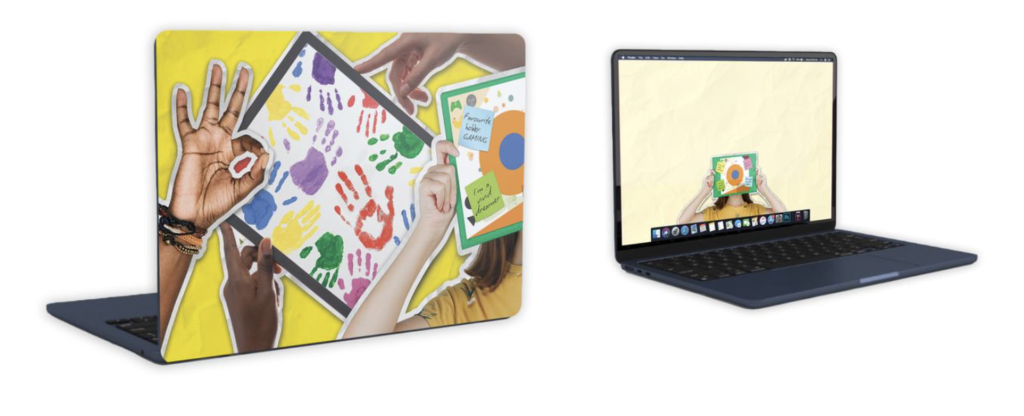
Visual Art
Can I use GenAI to create art?
For the Visual Art design, a person is holding up a ‘Data Selfie,’ a self-portrait generated by coding personal data. The other image shows a hand-print collage, an early form of mark-making familiar to many. We want to prompt people to think about non-traditional ways to create or generate art, including by using technology, and to consider their own views about using technological tools for self-expression.
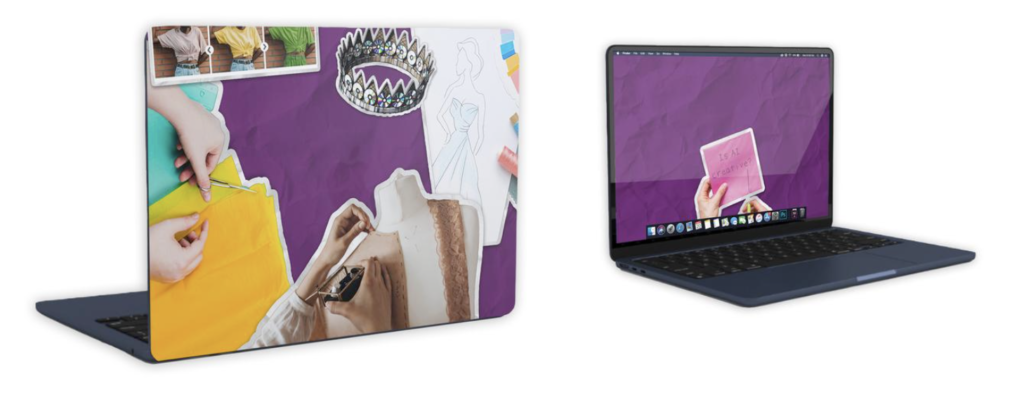
Fashion and Textiles
Can GenAI be used as a tool in fashion and textiles alongside human tactility and creative vision?
To continue the thematic imagery of human hands at work, images of industry-relevant textile production were chosen in conjunction with generated headgear concept art and an example of how AI can be used as a tool for efficiency through an interface showing colour changes on t-shirts.

Stickers
We designed stickers in conjunction with the laptop decals. Naming stickers were created with the dual purpose of naming the machine to make it easier to keep track of them, in addition to making them more accessible to young people by appearing more welcoming, friendly and inviting to use. I chose the names from famous founders and pioneers of AI technology. I also took the opportunity to celebrate some pioneering women in computing and AI.

Remember you can download the full set of wallpapers.
Read more about the BRAID project, and check out Dog and Fox’s new Instagram.